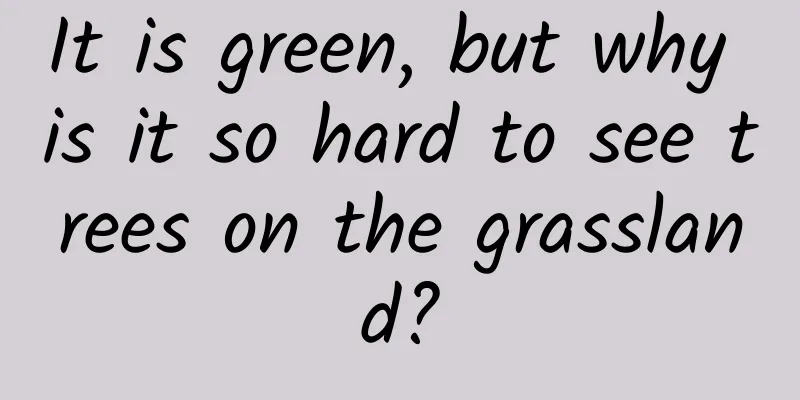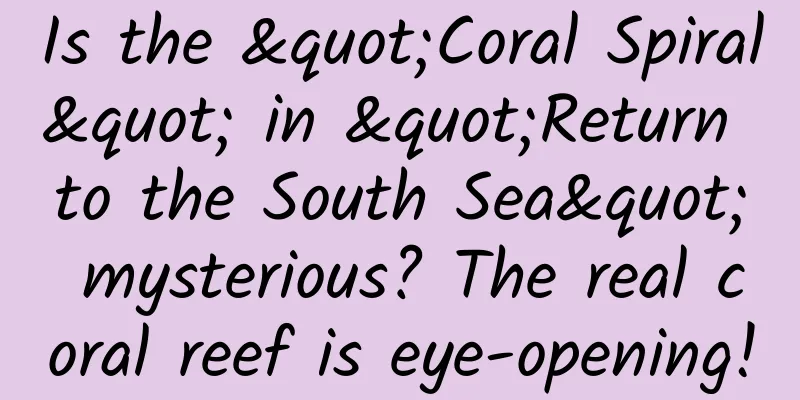Another sighting? Is it the truth or the Loch Ness Monster?

|
In June 2023, French tourists Etienne and Eliane Camel were traveling in Loch Ness when they discovered a huge gray vortex suddenly appeared in the water, which caused waves. They claimed to have witnessed a huge black shadow wandering underwater, which disappeared into the depths of Loch Ness after a few minutes. The dark shadow in Loch Ness photographed by French tourists and news reports about it. Image source: telegraph.co.uk Could it be? Could it be that the Loch Ness Monster has appeared again? The Legend of Loch Ness In the north of Scotland, there is a cold, turbid and mysterious freshwater lake, which is the well-known Loch Ness. The formation of Loch Ness can be traced back to more than 10,000 years ago. Glacial erosion at the end of the last Ice Age created this lake with the largest water storage in the UK. The peat in the lake makes the water of Loch Ness appear black and has very low transparency. Until the 1930s, people did not know the depth of Loch Ness. Under the dark blue water, there seem to be some unknown mysteries lurking, such as the famous Loch Ness Monster. The dark blue water of Loch Ness Image source: en.wikipedia.org The Loch Ness Monster is well-known. As one of the most mysterious and attractive unknown creatures on earth, some say it has a long neck and a round head, while others say it spits smoke... In fact, the legend of the Loch Ness Monster can be traced back to about 1,500 years ago, when an ancient book called "The Life of St. Columba" recorded the story of an Irish missionary, St. Columba, saving people from the claws of the Loch Ness Monster. "When the Loch Ness monster rushed towards the monks in the water, Columba was unmoved. He bravely walked to the lake, made the sign of the cross, and shouted to the monster in an imperative tone: 'Don't touch that man, leave quickly.' Although the monster was only a few feet away from the monks, it stopped after hearing Columba's words and fled the scene in terror." Since then, various legends about the monster have spread along the shores of Loch Ness. Over the centuries, continuous sightings have made people believe that there is a monster in the lake. But the real sensation caused by the Loch Ness Monster dates back to 1933. On May 23 of that year, the Aberdeen News reported that a bus driver named Sandy Gray witnessed a mysterious creature in the Loch Ness. It was in this report that the mysterious creature in Loch Ness got its own name - Loch Ness Monster. Newspaper reporting on the Loch Ness Monster Image source: narratively.com Sandy probably didn't expect that his sighting of the Loch Ness Monster would kick off a series of sightings. Since then, a large number of tourists have flocked to the area around Loch Ness, not only to see the natural wonders of Loch Ness, but also to witness the mysterious creatures in the lake. According to reports, more than 1,000 people have claimed to have seen the Loch Ness Monster in modern times, but in most cases, the visibility in these sightings was not very good, and most of the so-called witnesses were familiar with the legends circulating in Loch Ness. In April of the following year, the Daily Mail published a striking photo. A London doctor named Robert Kenneth Wilson took a photo of the mysterious monster in Loch Ness. The Loch Ness Monster in the photo looked like a plesiosaur, a long-extinct marine dinosaur. This photo has become the most widely circulated image of the Loch Ness Monster. The most popular photo of the Loch Ness Monster Image source: en.wikipedia.org However, 60 years after the photo was published, an insider revealed that the photo taken by the gynecologist was actually a submarine toy with a gray monster head , and the so-called "water monster photo" was just a complete hoax. Seeing this, everyone must want to know, does the Loch Ness monster really exist? The answer may be "no". Monster Hunter: Scientists use eDNA to find the truth Since 1933, the craze for finding the Loch Ness Monster has experienced several ups and downs. Many people have used divers and sonar to find the Loch Ness Monster, and some have even set traps in the lake to capture the so-called monster, but none of them have succeeded. In 2018, a team led by Professor Neil Gemmell, a biologist from the University of Otago in New Zealand, planned to use a new "tool" - eDNA technology to search for the so-called mysterious creatures in Loch Ness. eDNA, or environmental DNA , refers to a mixture of genomic DNA of all different organisms found in environmental samples, which has strong persistence in the natural environment. eDNA technology refers to the technical means of extracting DNA from environmental media such as water and soil, and then performing fragment amplification and high-throughput sequencing to understand the species diversity in different ecological environments. Over the past few decades, eDNA technology has helped scientists make a number of important discoveries. For example, in 2011, researchers found DNA from Asian carp in rivers around Chicago, suggesting that these invasive fish were about to enter the Great Lakes; in 2017, scientists also isolated Neanderthal DNA from cave soil in Spain, Russia and Belgium. eDNA technology experimental and analytical process Image source: References Assuming that there are so-called mysterious creatures in the lake, scientists have a high probability of detecting the DNA sequence of the monster in the water, thereby locking in the identity of the Loch Ness Monster. In order to conduct more thorough sampling, researchers conducted a two-week sampling work in Loch Ness, collecting 259 water samples from various parts of the lake, including samples taken more than 200 meters from Loch Ness. After obtaining enough samples, scientists tried to isolate DNA fragments in the water for subsequent experiments to obtain information about species in Loch Ness. After several months of intensive experiments, in September 2019, Professor Gemmell held a live press conference at the Loch Ness Visitor Center to announce the results of the study. The results were somewhat disappointing, but not surprising. The scientists found evidence of 3,000 species in the water, but none of them were giant reptiles, dinosaurs, or other animals that might match popular images of mythical sea monsters. Interestingly, Gemmell's team found a lot of eel DNA in Loch Ness. Therefore, Professor Gemmell proposed an alternative theory: the Loch Ness Monster might just be a very large eel! Of course, some people are not satisfied with this result and have produced relatively scientific evidence. If the Loch Ness Monster really exists, is it an eel? In fact, the hypothesis that the Loch Ness Monster is an eel first appeared in the 1970s. At that time, people used bait traps to collect samples of 129 European eels from the lake, and the distribution of the individual sizes of the captured eels was unbalanced. Therefore, Roy McCall, a professor of biology at the University of Chicago, speculated that there might be large eels in the lake, and the body structure characteristics of the eels were indeed consistent with the description of the monster by the witnesses. European eel Image source: Wikipedia But this explanation cannot convince everyone. At least scientist Flo Foxen believes that it is unlikely to perfectly explain the sightings of the Loch Ness monster with a "giant eel." Fulkerson conducted a relevant analysis based on the data in McCall's book and the public length data of 420 European eels caught in Belgium. The results show that the probability of having an eel of 1 meter in length in the lake is about 1 in 50,000 . Considering that the surface area of Loch Ness can reach 5,600 hectares and the total amount of fish resources in the lake is about 3,080 kilograms, assuming that half of them are eels, it is not surprising that there are individuals of about 1 meter in the lake. Body length distribution of eels in Loch Ness (top left) Image source: References At the same time, Foxen also pointed out that the possibility of finding an eel over 6 meters in length in Loch Ness is almost zero . The growth of eels in their life cycle is not linear. It actually takes about 30 years to grow to 1 meter long. Even if eels can maintain high-speed growth, it takes about 200 years to grow to 6 meters . It is estimated that the rarity of such eels is no different from that of water monsters. All in all, Foxen's research shows that the possibility of giant eels existing in Loch Ness is not high, and more efforts are needed from scientists to better explain the so-called monster sightings. However, whether the so-called monster in Loch Ness is a giant eel or not, it will not change those who firmly believe that there are mysterious creatures in the lake. The so-called controversy is often people's inner desire and yearning for "wonders". Even now, there are still many people who are interested in the Loch Ness Monster and come to the village by the lake to try their luck, hoping to see the real face of the monster. References: [1] Slon, V., Hopfe, C., Weiß, CL, Mafessoni, F., De La Rasilla, M., Lalueza-Fox, C., ... & Meyer, M. (2017). Neandertal and Denisovan DNA from Pleistocene sediments. Science, 356(6338), 605-608. [2] Jerde, CL, Mahon, AR, Chadderton, WL, & Lodge, DM (2011). “Sight‐unseen” detection of rare aquatic species using environmental DNA. Conservation letters, 4(2), 150-157. [3] Pawlowski, J., Apothéloz‐Perret‐Gentil, L., & Altermatt, F. (2020). Environmental DNA: What's behind the term? Clarifying the terminology and recommendations for its future use in biomonitoring. Molecular Ecology, 29(22), 4258-4264. [4] Foxon, F. (2023). The Loch Ness Monster: If It's Real, Could It Be an Eel?. JMIRx Bio, 1(1), e49063. [5] Mackal RP. The Monsters of Loch Ness. London, UK: Macdonald and Jane's; 1976. Author:EVEE Author's unit: School of Life Sciences, Peking University This article is from the "Science Academy" public account. Please indicate the source of the public account when reprinting. |
<<: Calculate the Earth's radius? All you need is a photo and some high school knowledge!
>>: Wisteria snacks are a delight, and eating them till you are exhausted
Recommend
5-day learning plan of ancient beauty exercises, 5 minutes a day to remove wrinkles, lighten spots and fight aging
Every woman wants to be younger than her peers Sk...
One article to solve private domain traffic
This article is divided into two parts: The theor...
Those popular internet buzzwords were actually written as Spring Festival couplets, hahahahaha…
The Spring Festival is coming again, and the Spri...
WeChat responds to reading user photo albums: This function will no longer be used
Earlier today, some netizens revealed that WeChat...
52 years later, Dongfanghong-1 is still flying in the sky? !
This article was reviewed by Liu Yan, Space Appli...
In fact, the frame is not the point. Is LeTV's super phone really super?
Accompanied by the huge controversy over "wh...
Tips for placing Tencent Guangdiantong graphic and text information flow ads!
Tencent has a lot of advertising resources, so th...
An inventory of the digital marketing industry in the first half of 2016!
In the first half of 2016, the market size of Chi...
He failed the teacher qualification examination many times, but he created a miracle by rewriting the high school biology textbook
He was born in poverty and lived in poverty for h...
Eating nuts incorrectly can lead to trouble! Check out 8 common misconceptions
Nuts and roasted seeds are an essential snack for...
Is it worth investing in WeChat Moments advertising? HOW DOES IT PERFORM?
Why use WeChat advertising ? Traditional advertis...
New gesture operation appears in the Android 10.0 beta: cancel the back button and rely on Home capsule to complete
Since the iPhone X removed the physical Home butt...
Build a "Digital Great Wall" for the thousands of miles of border and coastal defense
Each "informationized sentinel" can det...
The "most secure" iOS was also conquered, a new iPhone vulnerability was exposed, and Apple admitted that it could not be fixed
Although Apple's technology is powerful, iOS ...
Why can't your teeth be whitened no matter how hard you brush them? First you need to understand why they turn yellow...
I only dare to smile at you Not because of polite...









